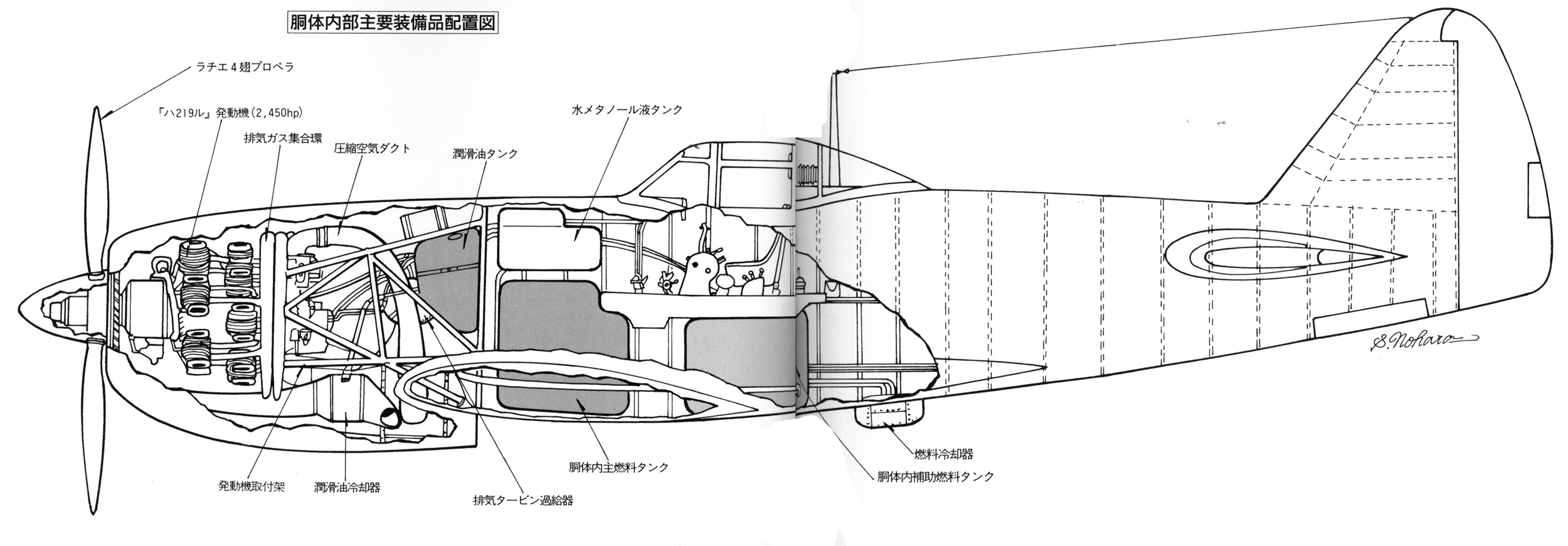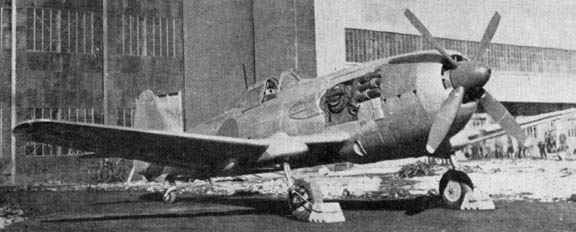







Hi Guys

I'm New on this forum, but for years i've been studying about WW2 Japanese Aircrafts and i've been years playing Il-2 Sturmovik, and i found it that Il-2 sturmovik were seriously lacking of Japanese Aircraft. so after i digging up on some books and articles, along with discussion with fellow history enthusiast on twitter, I think that Nakajima Ki-87 turbo-supercharged japanese interceptor would be a nice addition. it featured a large powerful engine, Nakajima Ha-219, 2400 hp, and a Turbo-Supercharger device on the right front fuselage. I think it would be an awesome addition besides the existing late war japanese airplanes such as A7M Reppu, B7A Ryuisei and japancat's Ki-61 and Ki-100 pack.
Ki-87 were result of Imperial Army's request to a heavily armed single-engined hi-altitude interceptor, capable of reaching a maximum speed of 800 kph (497 mph) and having a maximum range of 3,000 km (1,864 miles). As these performance requirements appeared somewhat unrealistic they were soon revised and the endurance requirement was lowered to 30 min at combat rating at 500 - 800 km (310 - 497 miles) from its base plus one hour loiter time. The maximum speed was no longer specified, but the aircraft was to be armed with two 20 mm and two 30 mm cannons. An agreement between Nakajima and the JAAF was reached in November 1942, and an order was placed for three Ki-87 prototypes, expected to be completed between November 1944 and January 1945, and seven pre-production machines, to be completed between February and April 1945.
A 2,400 hp Nakajima [Ha-44] 11 or [Ha-44] 21 (Ha-219 Ru) with a turbosupercharger mounted on the forward fuselage side was selected, and a 16 blade propeller, was mounted in the cowling. One synchronized 20 mm Ho-5 cannon was mounted in each wing root, and one 30 mm Ho-105 cannon was placed in each wing outboard wheel well. Before completion of the first machine changes were already planned and, despite Nakajima's objections, the JAAF required the turbosupercharger be placed in the rear fuselage on the sixth and subsequent aircraft. In addition, Nakajima intended to change the engine reduction gear ratio from 0.578 to 0.431 starting with the third aircraft and t improve cooling on the tenth aircraft by using a faster-running fan. To provide room in the wing for the heavy armament and the self-sealing fuel tanks, Nakajima had to design a novel undercarriage - by Japanese standards - inspired by the one fitted to the Curtiss P-40 in which the main undercarriage members retracted rearwards and the wheels turned through 90 degrees to lie flat.
Due to the numerous difficulties with the electrical undercarriage retraction mechanism and to teething teething problems with the engine's turbosupercharger, only one prototype (c/n 8701) was completed in February 1945. Test flights began in April 1945, but only five were made during which no attempts were made to retract the troublesome landing undercarriage and no performance data was recorded. Although the aircraft demonstrated good flying characteristics, thought to be superior to those Ki-84, difficulties with the engine prevented further testing.
An improved model, the Ki-87-II, powered by a 3,000 hp Nakajima [Ha-46] 11 (Ha-217) with a turbosupercharger mounted in the fuselage belly, was still on the drawing boards when the war ended. It was anticipated that this aircraft would have had a top speed of 738 kph (459 mph) at 11,000 m (33,530 ft) and a service ceiling of 12,850 m (42,160 ft).
(two, third and fourth paragraph were taken from
http://forum.warthunder.com/index.php?/topic/169451-the-nakajima-ki-87-japans-potential-b-29-killer/)
SpecificationGeneral characteristics
Crew: 1
Length: 11.82 m (38 ft 9.375 in)
Wingspan: 13.423 m (44 ft 0.5 in)
Height: 4.503 m (14 ft 9.312 in)
Wing area: 26.00 m² (279.860 ft²)
Empty weight: 4,388 kg (9,672 lb)
Loaded weight: 5,633 kg (12,416 lb)
Max. takeoff weight: 6,102 kg (13,448 lb)
Powerplant: 1 × Mitsubishi Ha219 Ru (Ha-44/11) eighteen-cylinder air-cooled radial four-blade, 1,789 kW (2,400 hp)
Performance
Maximum speed: 697 km/h (379 kn, 433 mph)
Cruise speed: 470 km/h (254 kn, 292 mph)
Service ceiling: 12,855 m (42,175 ft)
Wing loading: 216.6 kg/m² (44.3 lb/ft²)
Power/mass: 0.317 kW/kg (2.3 kg/hp; 5.2 lb/hp)
Armament
Guns: 2 × 30 mm (1.18 in) Ho-105 cannons in the outer wing panels and 2 × 20 mm synchronized Ho-5 cannons in the wing roots
Bombs: 1 x 250 kg (550 lb) bomb under fuselagemore like the real Japanese Thunderbolt for me

 Author
Topic: Nakajima Ki-87 Japanese Turbo-Supercharged Interceptor (Read 12315 times)
Author
Topic: Nakajima Ki-87 Japanese Turbo-Supercharged Interceptor (Read 12315 times)


